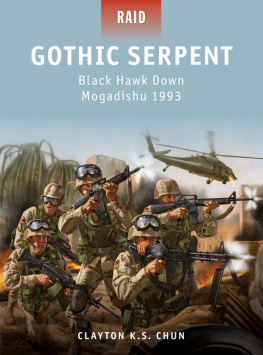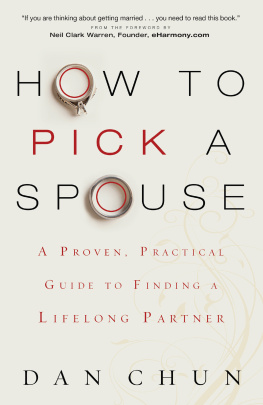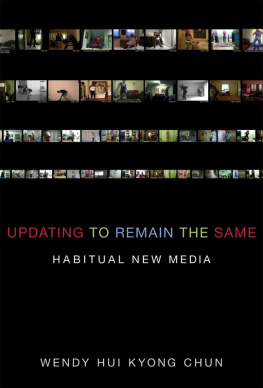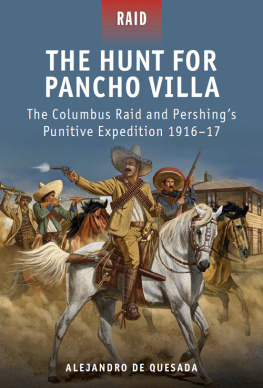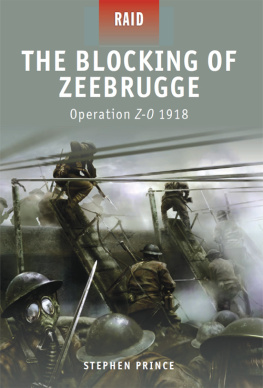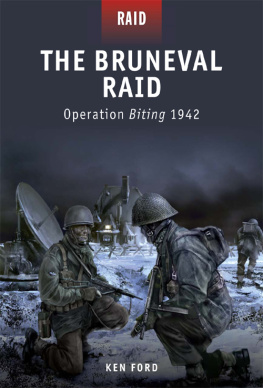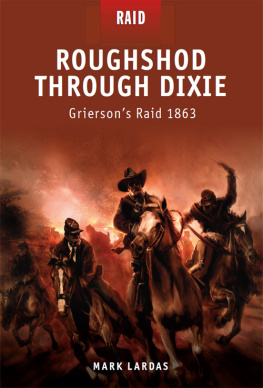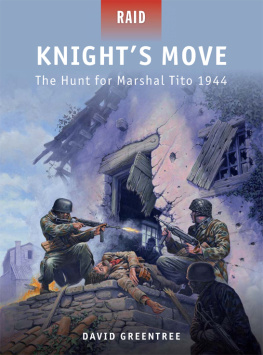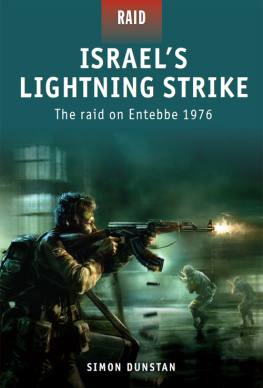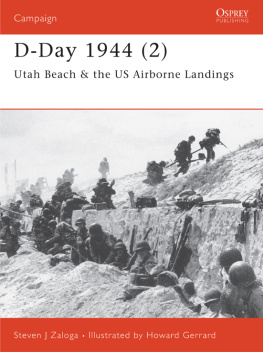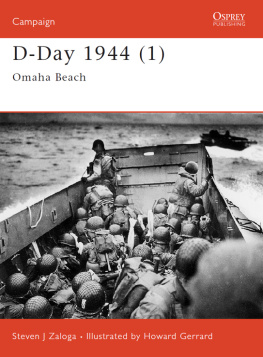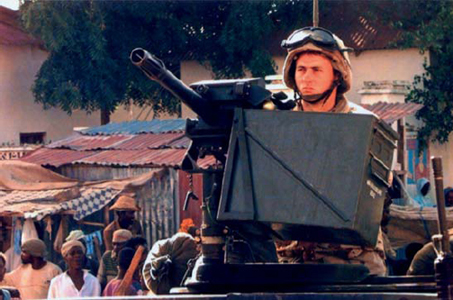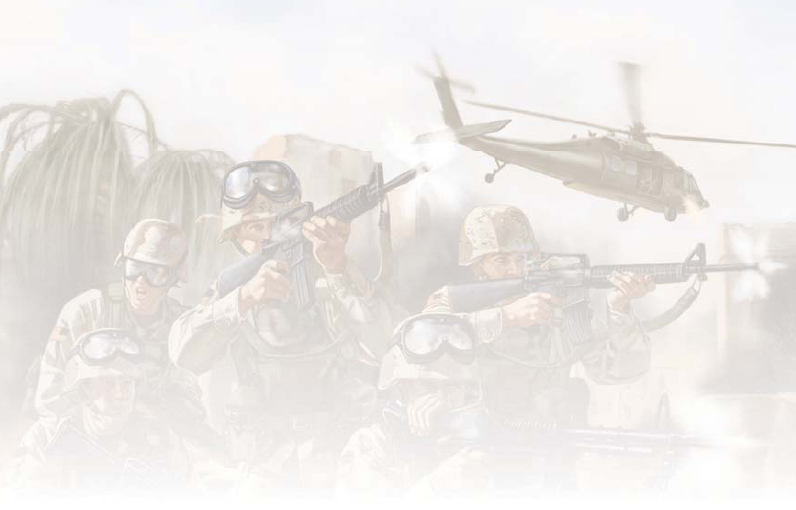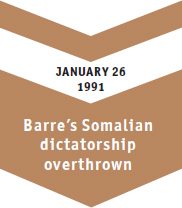CLAYTON K.S. CHUN
Me against my brother.
In 1992, the United States basked in the glow of its recent military and political victory in Iraq. Washington had successfully orchestrated a coalition of nations, including Arabic states, to liberate Kuwait from Saddam Hussein. The US administration was also celebrating the fall of the Soviet Union and the bright future of President George H.W. Bushs New World Order. The fear of a nuclear catastrophe seemed remote given the international growth of democracy. With the United States now as the sole global superpower, some in the US government felt that it now had the opportunity, will, and capability to reshape the world by creating democratic states around the globe. The only concern for some was where to start, given the many areas that would merit rebuilding. Africa was hardly on Washingtons list of vital national interests. Somalia was a remote failed state created from Italian and British colonies. Although bordering the Red Sea and the Indian Ocean, the region had been a minor focus of the Cold War. Moscow supported regimes first in Somalia and later in Ethiopia. Few Americans knew or cared about Eastern Africa. Other areas seemed more important.
Somalia was a country that had fallen into chaos. The country had suffered a devastating civil war when various factions overthrew its dictator, Mohamed Siad Barre. Barre, who came to power in late 1969, had tried to build a socialist state by subverting historic clan allegiances. Barres strong-arm methods worked as he outlawed political parties and clans. Mogadishu received military aid from the Soviet Union to advance his rule Somalia offered Moscow an African foothold and a major naval port on the Indian Ocean. However, Barre fell out of Soviet favor when he attacked neighboring Ethiopia. As a new socialist state, Ethiopia had offered further expansion into Africa for the Soviets. The Soviet government therefore cut off aid and support to Somalia, and Washington furthered the schism between Moscow and Mogadishu when it came to Barres side.
SOMALIA: CLANS AND ISLAMIC TERRORISTS
Supporting UN operations is a tough mission for combatants and non-combatants alike; it was even harder without a single government entity with which to negotiate, so the UN and Washington had to interact with clan and tribal leaders. Somalia was a patchwork of clans artificially formed into a country. During its colonial period from the late 19th to mid 20th centuries, Somalia fell under the rule or control of various foreign powers including the Italians, French, and British. African neighbors, such as the Ethiopians and Kenyans, also governed areas along with ethnic Somalis. The situation changed with the end of colonial rule and the formation of the Republic of Somalia in 1960. Various governments ran Somalia until Mohamed Siad Barres reign, but despite his administrations control of the Somali government and its people, Barre had a very difficult time handling the clans and their activities.
Somalis share a common culture, but differ through clan association. Somalias Dir, Isaaq, Darood, Hawiye, Digl, and Rahanwein clans make up the largest groups in the region. Barre came from the Darood clan, while his rival Mohamed Farrah Aideed claimed roots in the Hawiye. Under the clan system, members show allegiance first to family, then to their clan, and finally the nation. The major clan groups had sub-clans that further divided Somalia. Rulers, whether they were Barre or Aideed, had to satisfy clan needs first at the expense of other clans or the national interests. Political patronage and favoritism brought inevitable conflict. Squabbles over resources, political power, or other issues divided Somalia. Control over the clans and Somalia could only come with authoritarian rule and force under Barre. For Barre, the banning of clans under his regime, while giving the appearance of favoring his clan, further alienated the government from the Somali people and helped lead to a civil war.
Internal strife after Barres fall led to a rise in insurgencies fuelled by clans and other groups. Somalias civil war brought opportunities for many non-clan groups to expand their activities, while the nations collapsed economy led to arms smuggling and khat drug trafficking. The social breakdown also brought poverty and willing converts ready to fight. With no central authority to fear, terrorist organizations made their home in Somalia in the early 1990s, with the goal of creating a Somali government following Islamic laws, since almost all Somalis are practicing Muslims. One group, the Al-Ittihad al Islami (AIAI), offered aid and fighters to rebels in the Ogaden area. The AIAI wanted to help these rebels to break away from Ethiopia and extend their radical Islamic message; Osama bin Laden, according to American intelligence sources, had links with the AIAI.

As Somalia descended into chaos, the only unifying force was the clans. Somali clans dictated how their members lived, who got food, and which members could earn a living. Here, a Somali clan representative hands out work permits. (DoD)
Aideeds propaganda claims that the UN and Americans were trying to convert the Somalis away from Islam played on the peoples Muslim beliefs, regardless of clan affiliation. It also helped extended the influence of radical Islam. The struggle between an Islamic people and the Americans may have brought another party into the conflict, with serious future implications. Allegedly, the Somali National Alliance (SNA) militia, who opposed Task Force Ranger (TFR) soldiers, trained under al-Qaeda and the AIAI. Many of the al-Qaeda members who trained the SNA had served in Afghanistan against the Soviets and now the Americans in Somalia. Ironically, American intelligence agencies may have armed and trained some of the same radical Islamic fighters in Afghanistan who would eventually help shoot down two American helicopters and cause Washington to pull out of Somalia.

President George H.W. Bush, late in his administration, committed the United States to humanitarian relief efforts in Somalia. Massive famine in Somalia motivated him to send the military to support the UN. (Col Pat Cassidy)
Destroying Somali clan associations and activities was impossible. There were six major clans with 20 sub-clans in Somalia. The Somali clan leadership felt marginalized and isolated by Barre, hence the clans formed rebel groups against the Barre government, supported by Ethiopian arms and aid. One clan, the Hawiye, started a political movement, the United Somali Congress (USC), in defiance of Barre. Based in Mogadishu, Mohamed Farrah Aideed headed the USC. Aideed, a former general in Barres regime, came from one of the largest and most powerful Somali clans, the Habr Gidr, a sub-clan of the Hawiye. In an effort to crush Aideed in Mogadishu, Somalias capital, Barre started to crack down on this clan, but Aideed became a warlord with control over a large part of Mogadishu. Unfortunately, Barres efforts turned violent and resulted in several massacres. Washington turned off its aid to the Somali government. The nation exploded into civil war and chaos, and Aideed and other rebel groups overthrew Barre on January 26, 1991. Disorder immediately followed.

